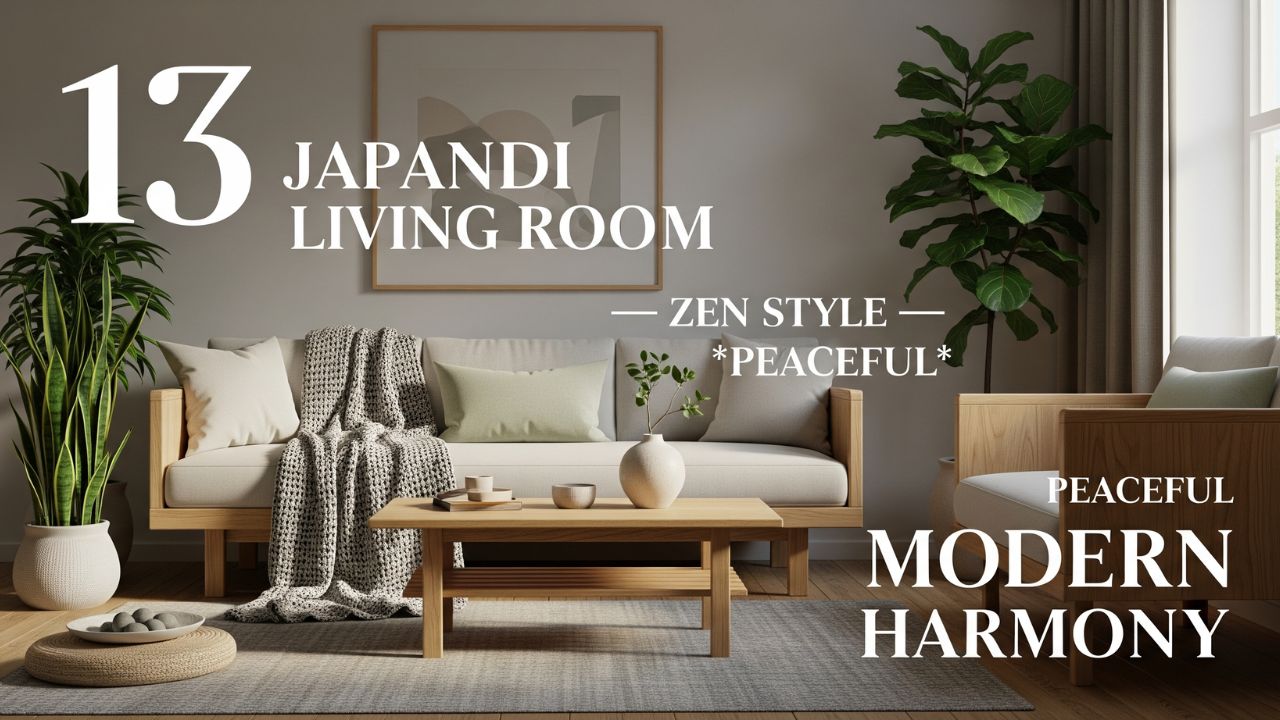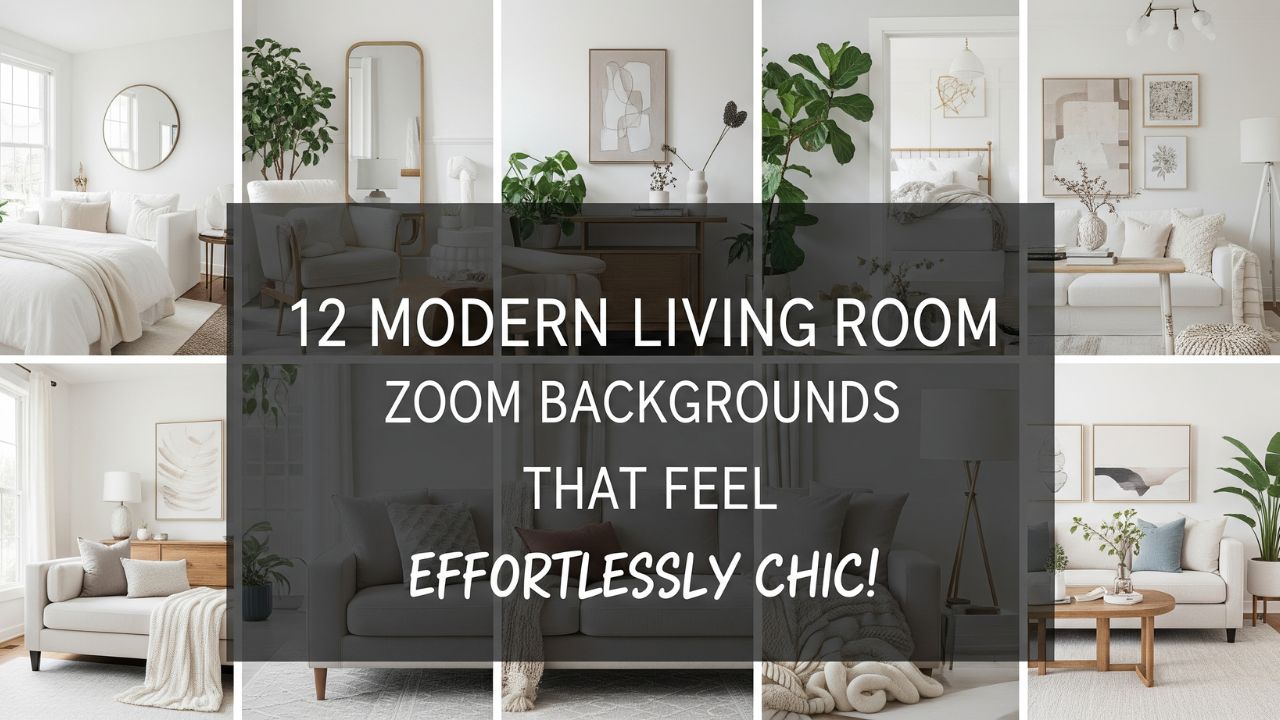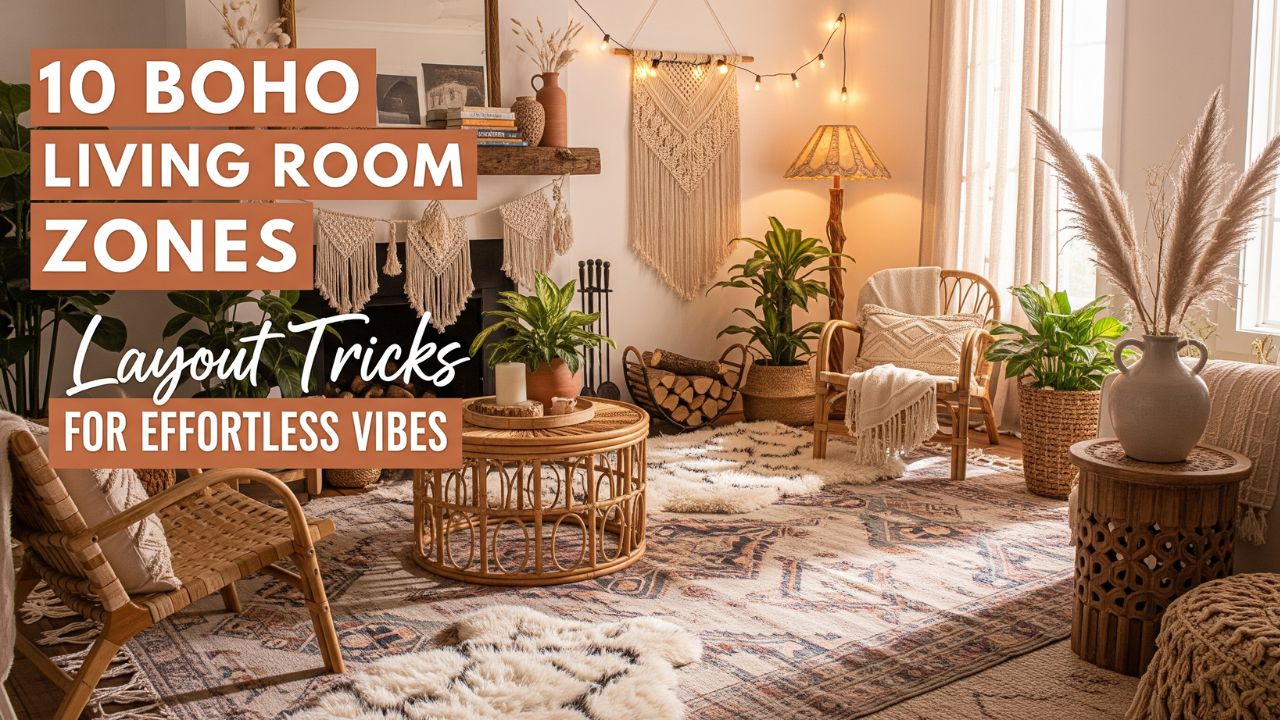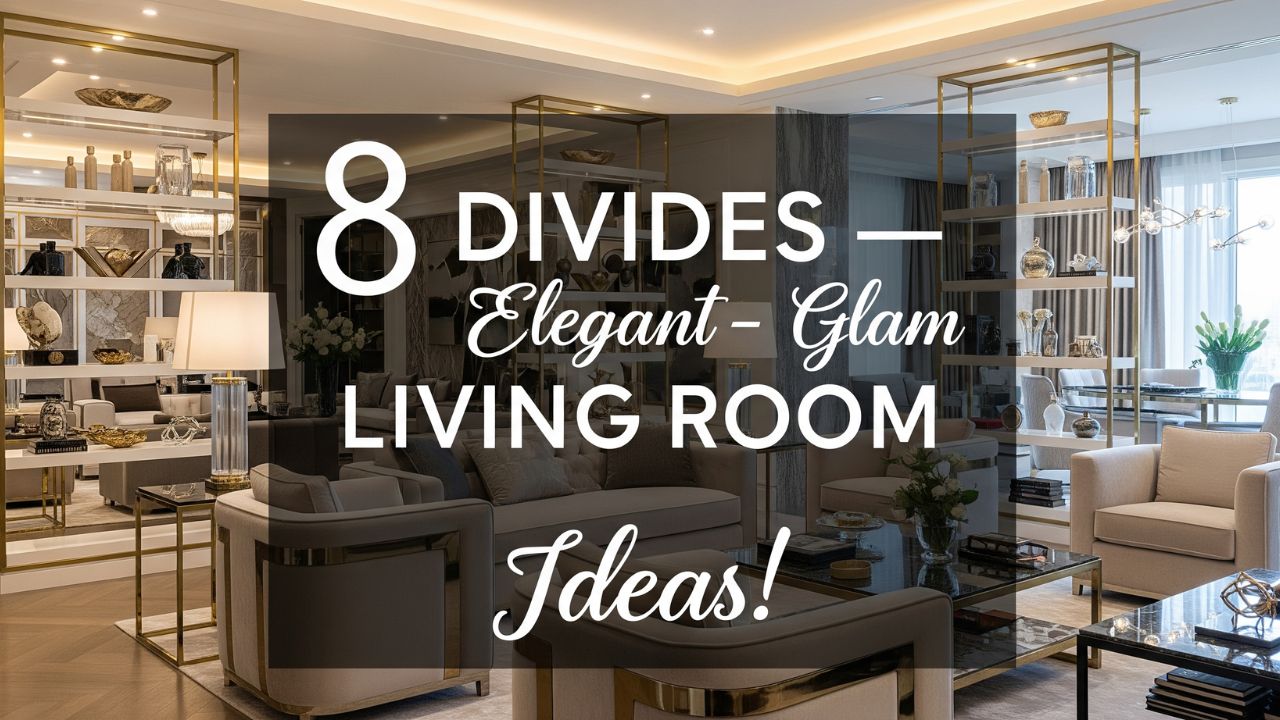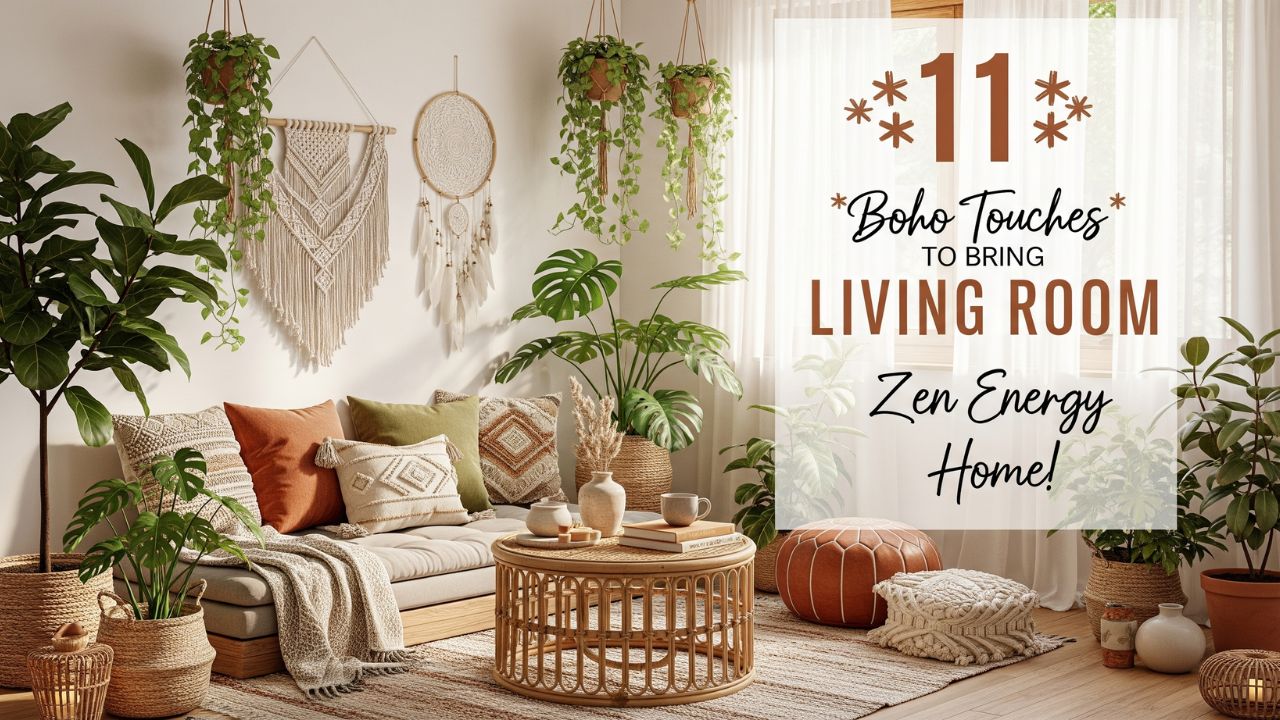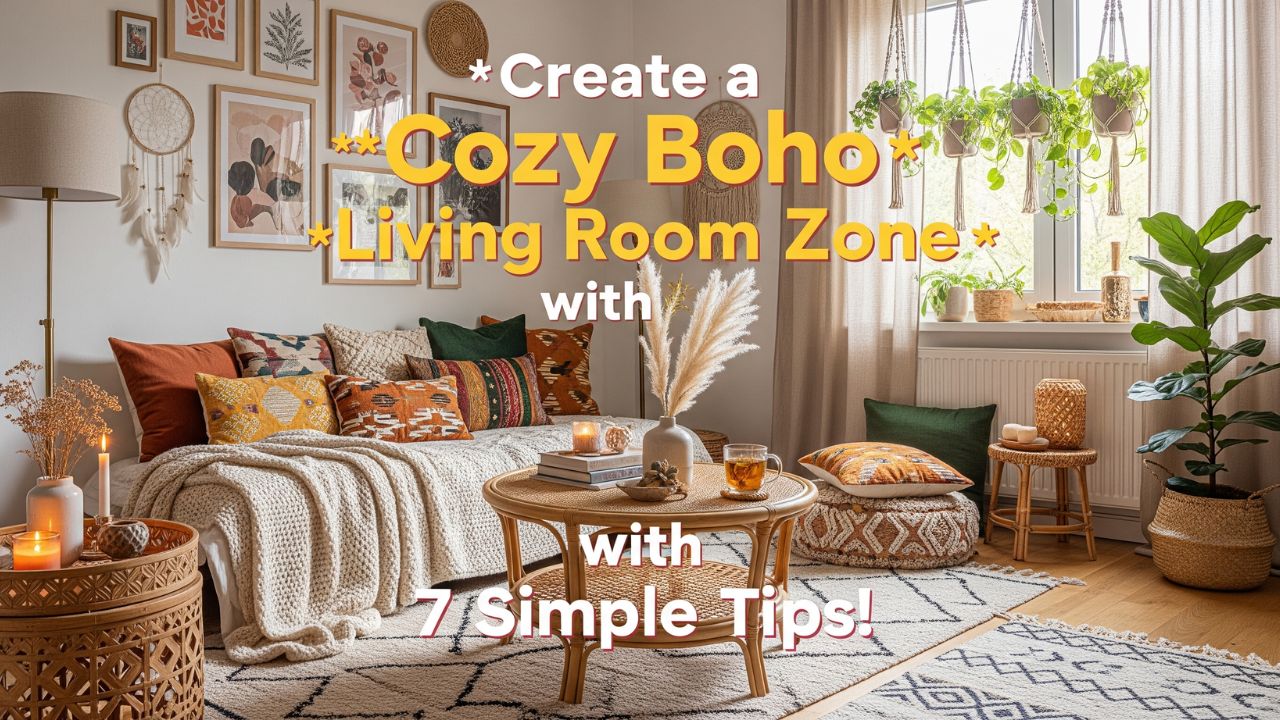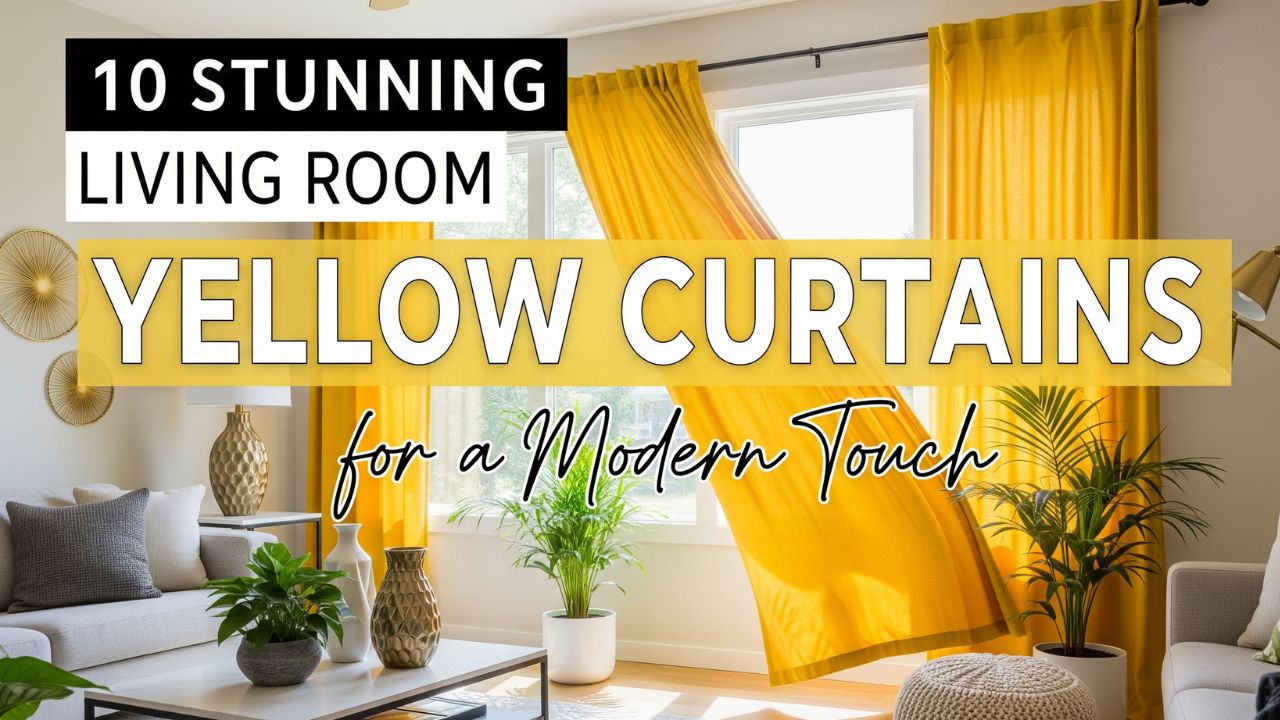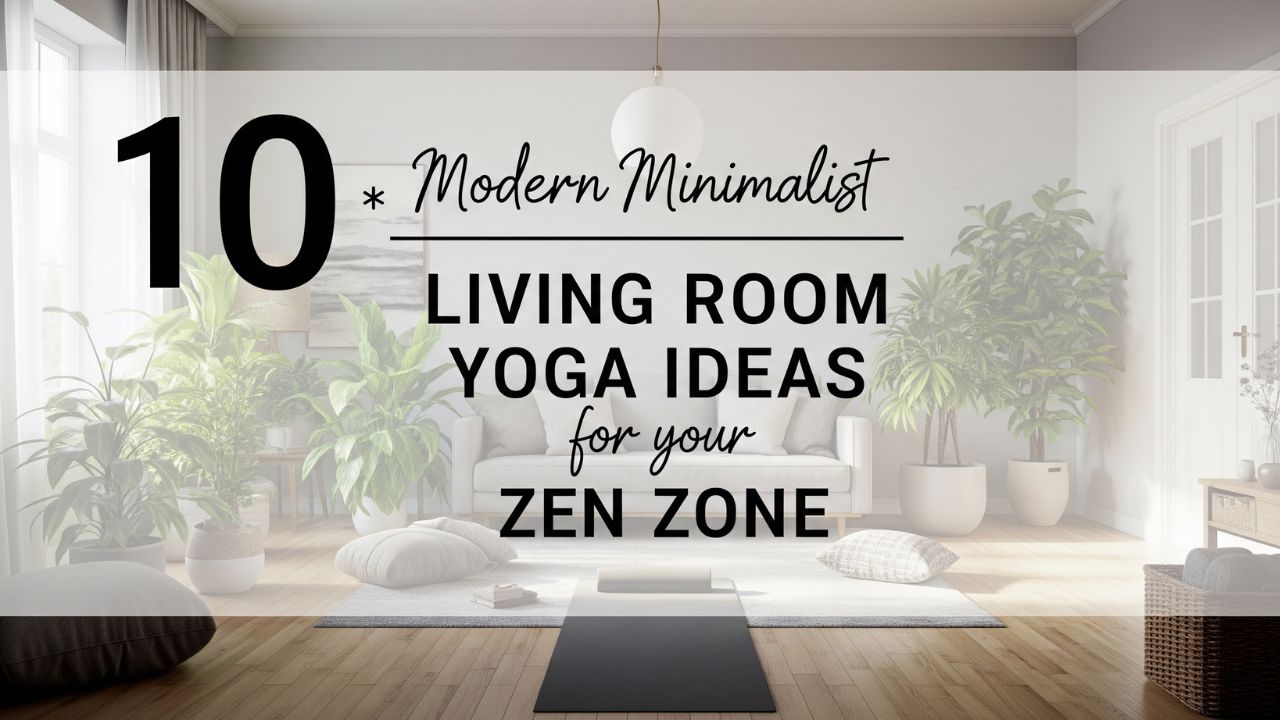Imagine this: a cozy, minimalist space where soft light gently dances across neutral-toned walls, calming you after a busy day. Picture how the simplicity of Scandinavian design brings a sense of peace and calm to your evenings.
The Scandinavian living room style, with its light, airy, and functional design, has long been adored by interior enthusiasts. But what makes this style particularly perfect for evening relaxation? And how can you transform your living room into a serene night retreat?
Did you know that Scandinavian interiors thrive on the principle of hygge – the Danish concept of comfort and coziness? Whether it’s a dark winter evening or a breezy summer night, creating an inviting, warm space is vital in Scandinavian design.
And when the sun sets, it’s the perfect time to embrace this lifestyle. This post will guide you through 9 tips for turning your living room into a light, airy, and peaceful evening sanctuary. If you’re ready to create an enchanting Scandinavian-inspired retreat, let’s dive in.
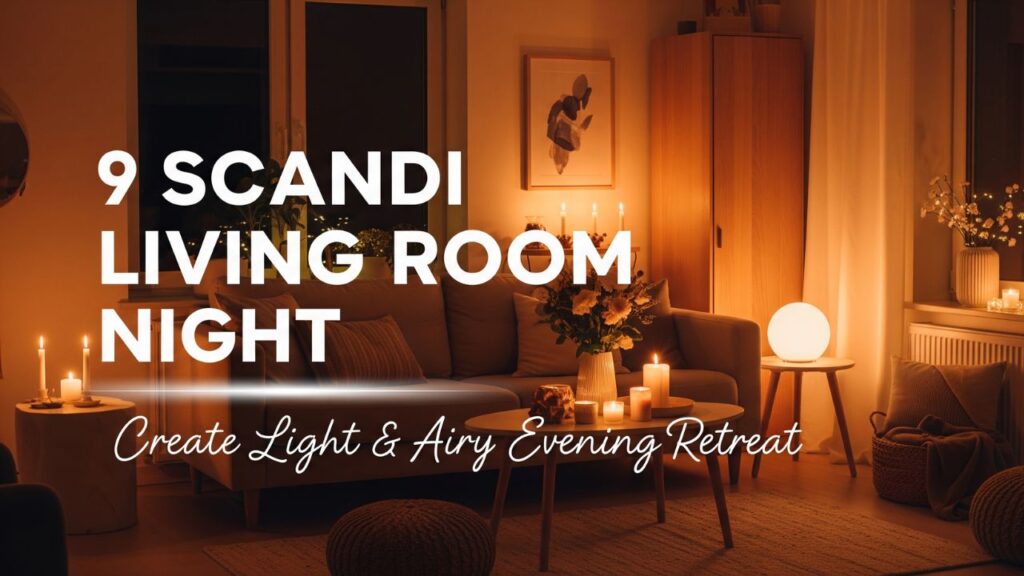
Table of Contents
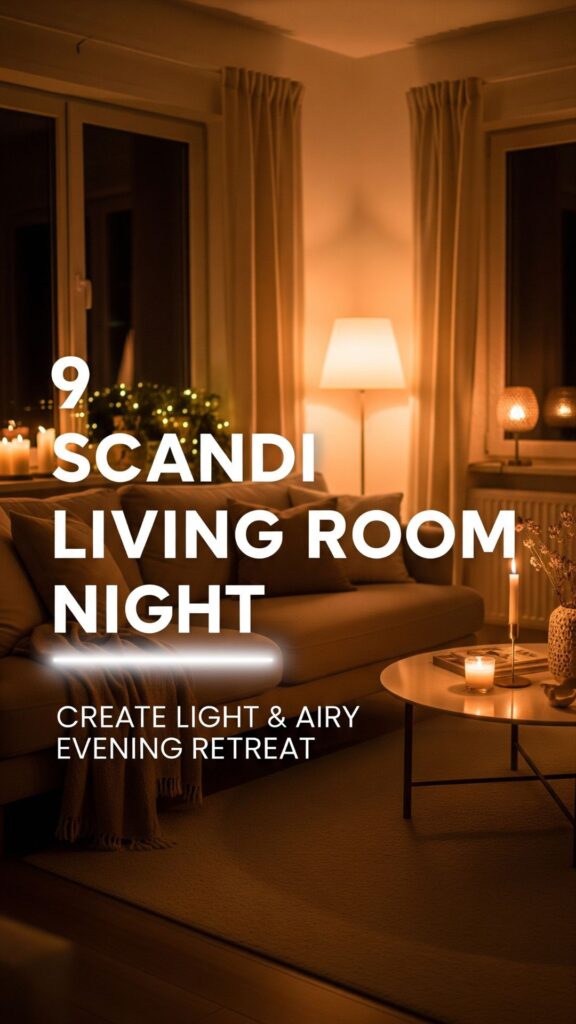
9 Best Scandi Living Room Night Ideas
1. Use Neutral, Soothing Colors for Walls and Furniture
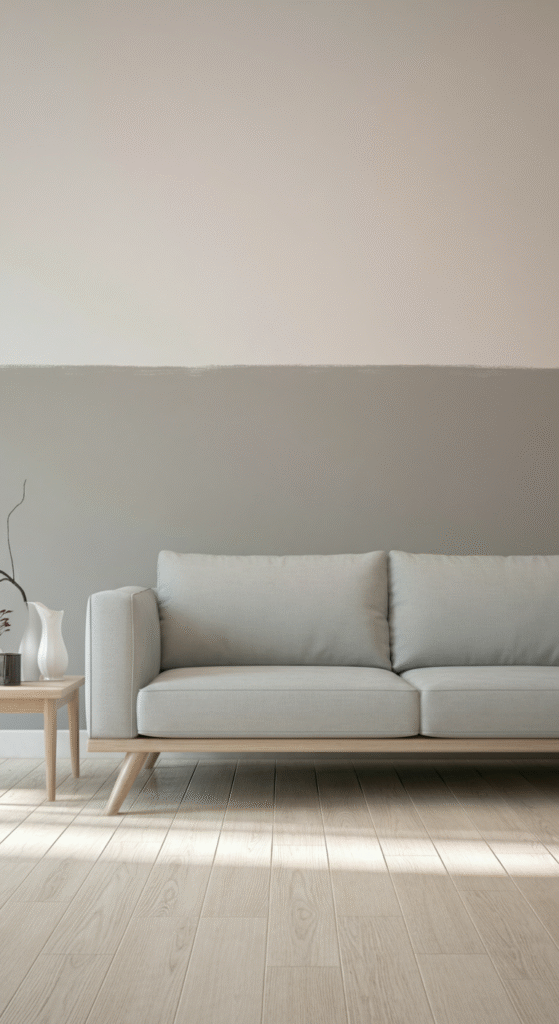
When it comes to Scandi design, color is key. The Scandinavian aesthetic is characterized by a neutral color palette—think whites, light grays, muted blues, and earthy tones. These colors have a remarkable ability to make a room feel spacious and calm, which is exactly what you need when transforming your living room into a peaceful evening retreat.
Why Neutral Colors Work: Neutral tones not only create a relaxing atmosphere but also reflect light, making the room feel brighter even as the evening sets in. The soft hues ensure that your living room maintains an airy, open feel, rather than becoming too heavy or claustrophobic as night falls.
Interesting Fact: In Scandinavian countries, long winters with limited daylight hours make creating a bright, inviting space even more crucial. Neutral colors are used to reflect the little natural light that is available, promoting mental well-being and a sense of warmth during the colder months.
2. Embrace Natural Light and Simple Window Treatments
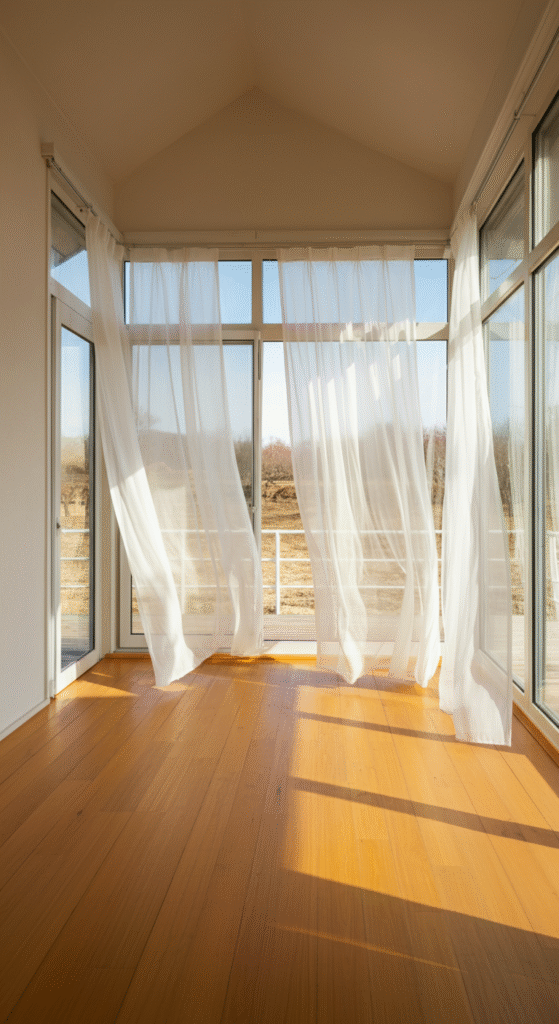
Scandinavian homes are designed to let as much natural light in as possible, and your living room should be no different. Large windows, paired with light, simple curtains or blinds, allow the daylight to filter through and create a soft, peaceful glow in the room.
Do You Know? The long summer days in Nordic countries provide up to 24 hours of daylight, making it essential for homes to embrace natural light. While this might not be practical everywhere, creating an environment that lets in natural light, even in the evening, is vital for achieving that Scandinavian feel.
Window Treatment Tip: Opt for sheer white or light-colored curtains that allow light to pass through without compromising your privacy. For a more modern look, consider blinds in a light wood finish to complement the minimalist design.
3. Incorporate Minimalist Furniture
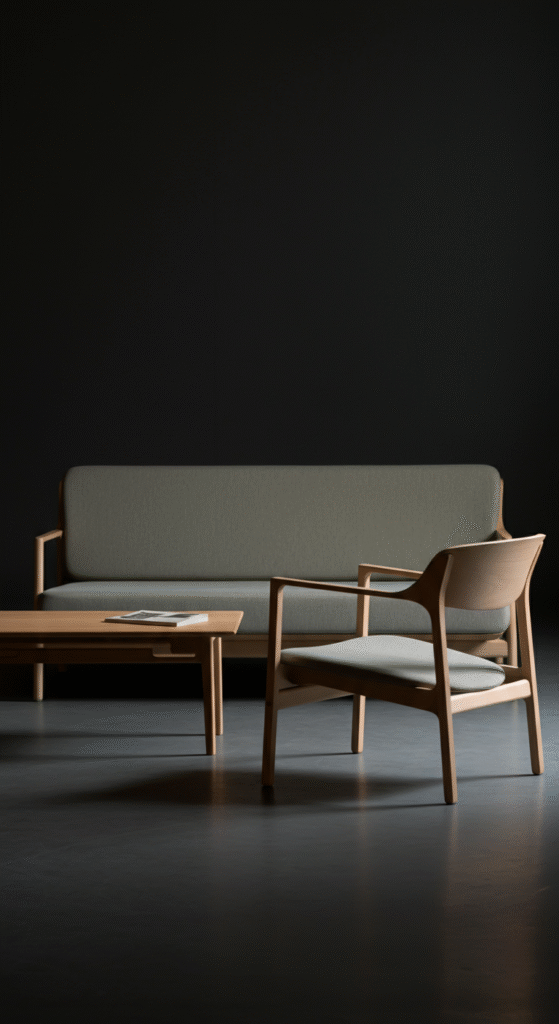
Minimalism is at the heart of Scandinavian design. To maintain the feeling of openness and lightness, your furniture choices should be simple, sleek, and functional. A few carefully selected pieces that don’t overpower the space are ideal for creating a tranquil atmosphere.
Myth Busted: Many people think minimalism feels cold or sterile, but Scandinavian minimalist interiors are warm, cozy, and inviting. The secret lies in choosing the right materials, such as wood and wool, and mixing them with the perfect balance of light and shadow.
Furniture Suggestions: Think of low-profile sofas in muted tones, wooden coffee tables with simple lines, and open shelving that doesn’t clutter the space. A well-placed armchair with a throw blanket can also add a touch of warmth without disrupting the room’s simplicity.
4. Focus on Lighting: Layer with Soft, Warm Lights
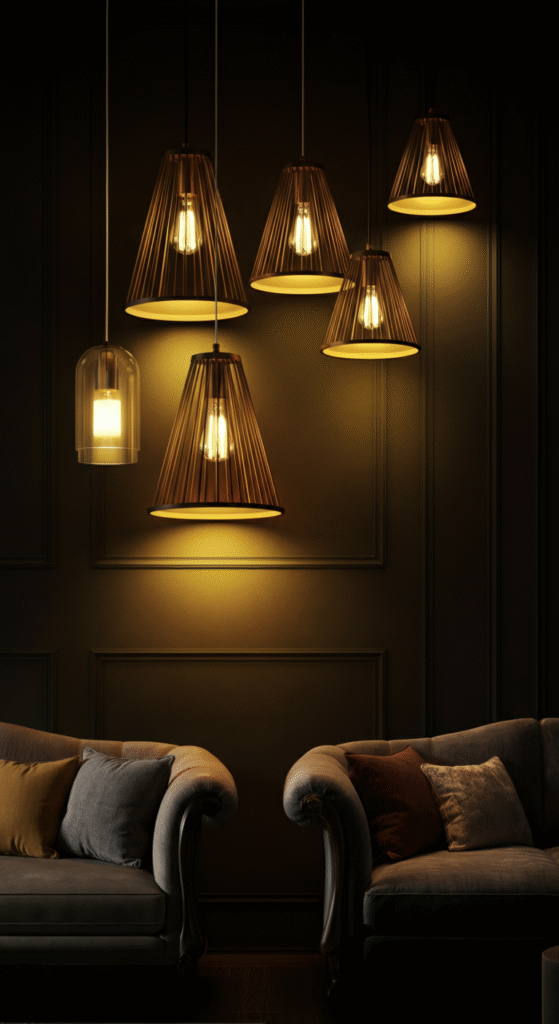
Lighting plays a crucial role in creating a Scandinavian-inspired evening retreat. While natural light is important during the day, artificial lighting is just as essential once the evening sets in.
Interesting Fact: Scandinavians use layered lighting techniques, which means combining ambient, task, and accent lights to create different moods throughout the day and night.
Lighting Ideas: Use warm-toned pendant lights, table lamps, and floor lamps to create a soft, inviting glow. String lights or candles in Scandinavian-style holders can also bring a touch of coziness to the room, especially during evenings when the atmosphere feels a bit darker.
5. Add Textures: Cozy Rugs, Throws, and Cushions
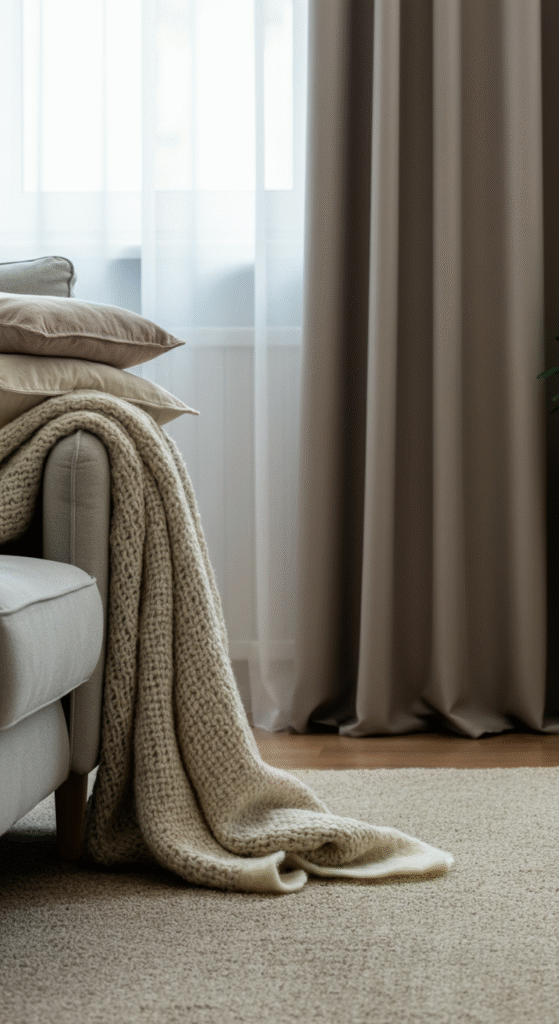
One of the easiest ways to enhance the comfort of your Scandinavian living room is by incorporating various textures. Adding soft, tactile materials like wool, linen, and cotton helps balance the minimalist aesthetics with comfort.
Why It Works: Textures not only add warmth and depth to the space, but they also invite relaxation. Imagine wrapping yourself in a plush wool blanket or sinking into a cushy sofa with plenty of throw pillows to support your back. It’s the perfect environment for a quiet evening.
Textural Additions: Choose woolen throws, woven rugs, and linen cushions in subtle shades. Layering different fabrics enhances the cozy vibe and makes your space even more inviting after sunset.
6. Bring the Outdoors In: Incorporate Natural Elements
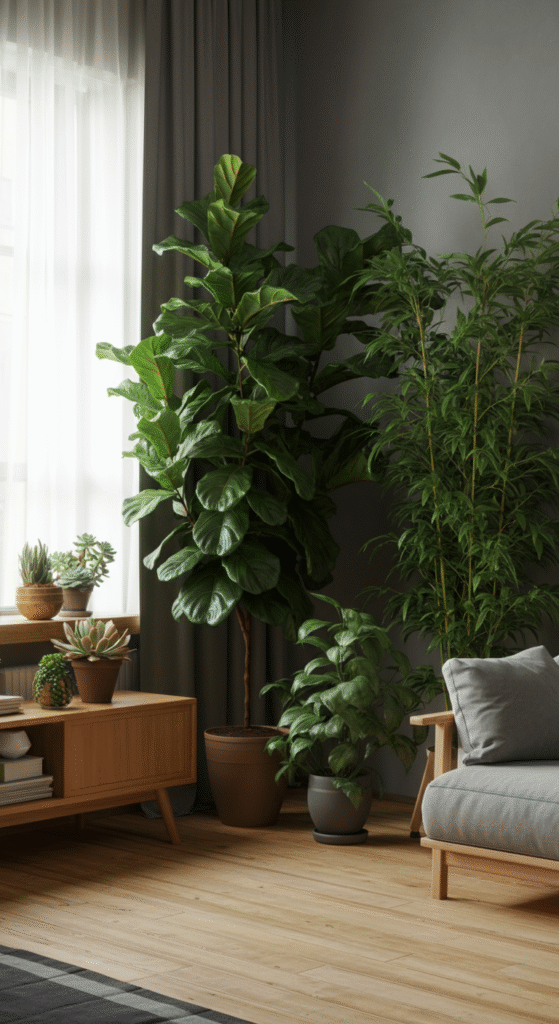
Scandinavians are known for their love of nature, and their interiors reflect this by bringing the outdoors indoors. Incorporating natural elements such as indoor plants, wooden furniture, and stone accents can make your living room feel even more connected to the environment.
Do You Know? Research has shown that indoor plants can improve mood, reduce stress, and increase productivity. In Scandinavian countries, where people spend a lot of time indoors due to cold winters, plants are an essential part of the home to foster a sense of well-being.
Plant Ideas: Incorporate hardy, low-maintenance plants like succulents or snake plants, which are both visually appealing and practical. A statement piece like a fiddle-leaf fig tree or a bamboo plant in the corner can also provide a touch of nature without overwhelming the space.
7. Choose Wooden Accents to Warm Up the Space
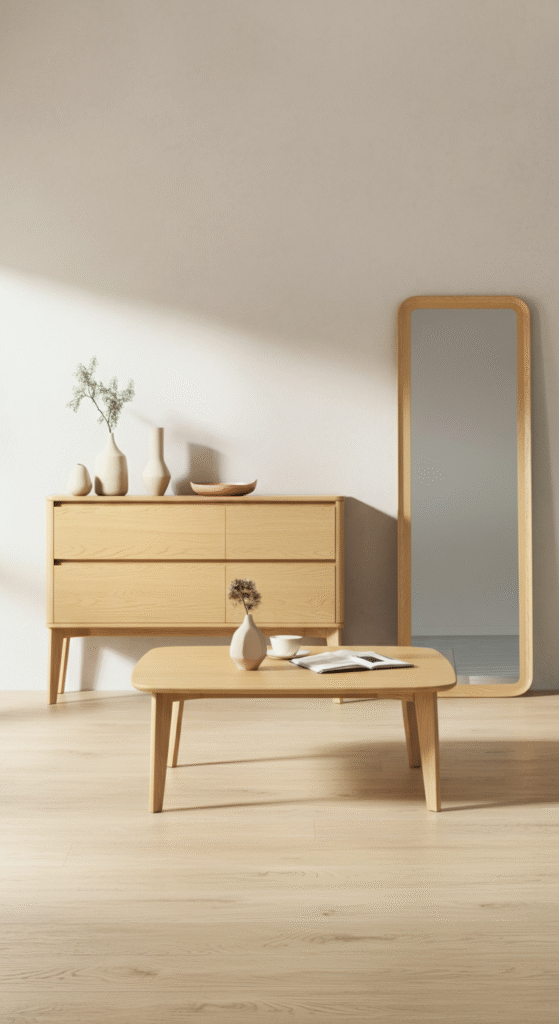
Wood is a staple in Scandinavian design, lending warmth and texture to minimalist interiors. Wooden floors, furniture, and accents can transform a cold, sterile room into a welcoming sanctuary.
Myth Busted: While people often associate Scandinavian interiors with an abundance of white and light tones, natural wood adds both warmth and richness to the space, making it feel more inviting and homey.
Wooden Element Suggestions: Look for natural wood pieces such as oak or pine for your furniture, or wooden beams on the ceiling to add depth and warmth. Consider using wooden picture frames or a wooden coffee table to bring out the organic beauty of the material.
8. Add Personal Touches with Art and Decor
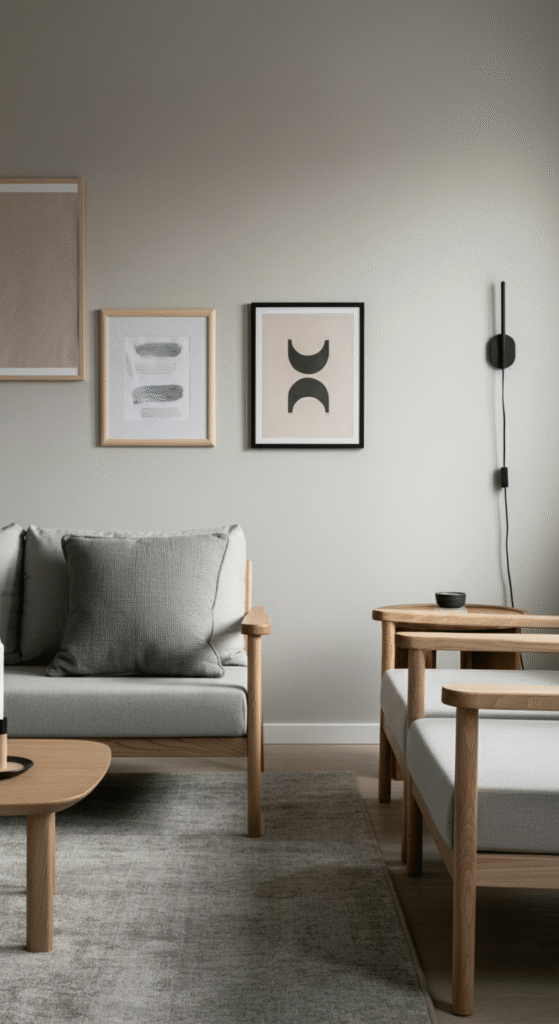
Even in the most minimalist of spaces, personal touches are important for creating a space that feels like home. Scandinavian design encourages art and decor that reflects personality without overwhelming the room’s tranquil atmosphere.
Interesting Fact: Scandinavian interior designers are known for balancing functionality with beauty. Simple, abstract artwork, black-and-white photography, or geometric prints can add visual interest without detracting from the clean lines of the design.
Art Ideas: Keep the artwork simple, with understated frames and minimalist designs. A large statement piece on one wall or a curated collection of smaller prints on a shelf or mantle can help break up the space while maintaining its calm vibe.
9. Keep Things Clutter-Free
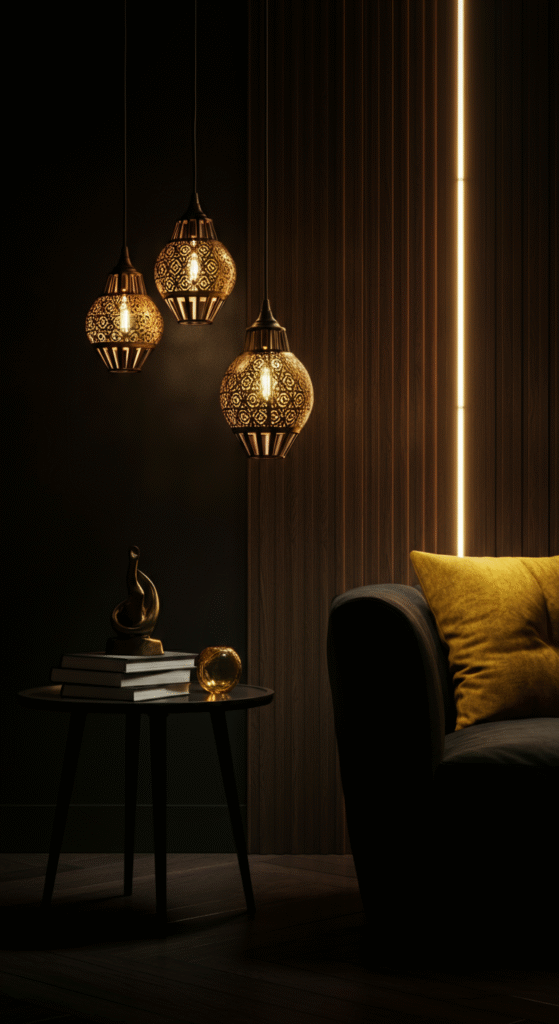
One of the foundational principles of Scandinavian design is the idea of clutter-free living. A tidy, organized living room is essential for fostering the sense of calm that Scandinavian interiors are known for, especially in the evenings when you want to unwind and relax.
Myth Busted: It’s often believed that minimalist spaces lack personality, but the opposite is true. By keeping only the most meaningful or functional items, you allow those pieces to shine, creating a much more dynamic and personal space.
Storage Tips: Use hidden storage, such as under-cushion compartments or multi-purpose furniture like ottomans with storage space. Open shelving can be used effectively, but only display items that are both beautiful and functional.
Conclusion: Your Light & Airy Scandinavian Evening Retreat
Creating a Scandinavian-inspired living room night retreat isn’t just about following design trends; it’s about crafting a space that fosters relaxation, comfort, and peace of mind. By focusing on natural light, neutral colors, minimalist furniture, and soft, warm lighting, you’ll turn your living room into a sanctuary you can enjoy every evening.
Remember, Scandinavian design is about balance—between simplicity and warmth, nature and modernity, functionality and beauty. Embrace the hygge lifestyle and transform your living room into the ultimate evening retreat that’s light, airy, and full of comfort
Frequently Asked Questions (FAQs)
How can I incorporate more natural light into my living room?
Maximizing natural light is key to Scandinavian design. If your living room doesn’t have large windows, you can use sheer curtains or blinds to allow more sunlight to enter. Mirrors can also be strategically placed to reflect natural light and brighten up the space. Additionally, opting for light-colored walls and furniture will help reflect light throughout the room.
What are the best materials for Scandi-inspired furniture?
Scandi furniture is typically made from natural materials, such as wood, leather, linen, and wool. Wooden pieces are often light-toned, such as birch, ash, or pine, which helps create a warm, inviting atmosphere. Linen and cotton are ideal for upholstery, offering both comfort and a clean, minimalist aesthetic.
Can I use bold colors in a Scandi living room?
While Scandinavian design favors neutral and muted tones, you can still introduce pops of color through accents such as cushions, rugs, or artwork. Opt for soft pastels or earthy hues to keep the space balanced. The key is to avoid overwhelming the room with too many bright, bold colors.
What type of plants work best in a Scandinavian living room?
Plants are an essential part of Scandinavian design, bringing nature inside. Low-maintenance plants such as snake plants, peace lilies, or succulents are great choices. These plants are not only easy to care for but also complement the minimalist style of a Scandinavian living room.
What type of plants work best in a Scandinavian living room?
Plants are an essential part of Scandinavian design, bringing nature inside. Low-maintenance plants such as snake plants, peace lilies, or succulents are great choices. These plants are not only easy to care for but also complement the minimalist style of a Scandinavian living room.
